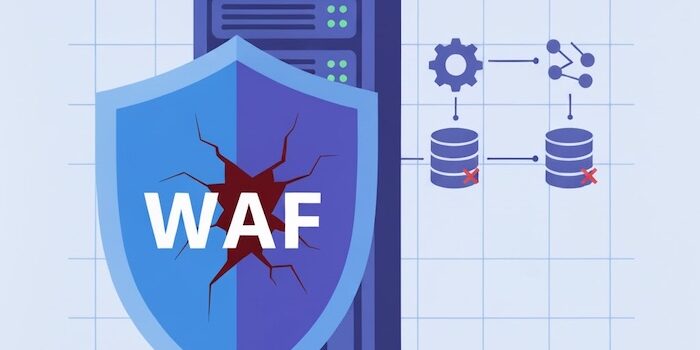You’ve just completed a penetration test and the report looks clean. No Remote Code Execution, no SQL Injection. And then you remember—the test was conducted over the Internet, through the WAF. That raises a real concern: is your application genuinely secure, or did the WAF block serious attacks that your application is actually vulnerable to?
This leads to the next question: Did we just test the strength of the WAF or our application?
The Illusion of Security: When the WAF Wears the Armor
A WAF is a fantastic security control. It acts as a shield, sitting in front of your web applications to filter and monitor HTTP traffic. It blocks common attack patterns, rate-limits requests, and deters opportunistic hackers. In many pentests, especially external black-box assessments, the tester’s attacks are met with 403 Forbidden messages, IP blocks, or challenge pages.
The vulnerabilities are often still there, lurking in the code—but the WAF is intercepting the payloads before they can ever reach the application logic.
This creates a dangerous false sense of security. You’re left with two critical, unanswered questions:
-
How would our application fare without its bodyguard?
-
What happens when an attacker bypasses the WAF?
Peeling Back the Shield: Testing the Application Itself
The primary goal of a pentest should be to understand the inherent security of the application. To do this, you need to see what lies beneath the WAF.
How can we test the actual application?
- Coordinated WAF Bypass: In a collaborative engagement, you can temporarily create a “waf-bypass” rule for the pentester’s IP address or directly using the origin IP addresses. This allows them to send traffic directly to the application, revealing its true vulnerability posture.
-
Internal Network Testing: Conducting the test from within your network (assuming the app is accessible internally) often bypasses the public-facing WAF, giving a clear view of the unguarded application.
The findings from this type of assessment are the ones that truly matter. They represent the residual risk that remains if the WAF fails.
The Inevitable Truth: WAFs Can Be Bypassed
No WAF is a silver bullet. They are not impenetrable fortresses; they are complex filtering systems, and like all systems, they can be bypassed.
Skilled attackers know this. They don’t give up after the first 403 error. They engage in a process of fuzzing, obfuscation, and technique refinement to slip their payloads through the cracks.
Common WAF Bypass Techniques Include:
- Publicly available databases like Shodan.io: Due to misconfiguration, WAF maybe bypassed if their origin IP addresses are exposed
-
Obfuscation: Encoding payloads in various formats (UTF-8, Unicode, base64), using mixed case or inserting junk characters to evade signature-based detection.
-
Obfuscation: This involves modifying the attack payload to make it look non-malicious to the WAF’s signature-based detection, while still retaining its malicious function when executed by the web application.
-
Parameter Pollution: Sending multiple values for the same parameter. The WAF might only inspect the first one, while the web application server uses a different one
The question is not if your WAF can be bypassed, but when and by whom.
The Moment of Truth: How Vulnerable Are You Really?
So, let’s face the scenario head-on. An attacker finds a clever bypass for your WAF. They now have a direct, unguarded line to your application.
What does your pentest report say now?
-
If your original pentest only tested the application through WAF, the new report might say something very different.
-
If your pentest focused on the application itself (bypassing the WAF), your report would have already contained these critical findings if they are present. More importantly, you have already prioritized and patched them.
This is the fundamental difference. In the first scenario, you are relying on a single, fallible layer of defense. In the second, you have built defense in depth. The WAF becomes a valuable speed bump—a layer that slows down attackers and blocks automated scripts—while the application itself is resilient, capable of surviving even if the outer shield is breached.
Conclusion: Shift Your Security Left and Test What Matters
A WAF is an essential component of a modern security stack, but it must be treated as a compensating control, not a replacement for secure code.
Your Action Plan:
-
Clarify the Scope: When commissioning a pentest, explicitly discuss the WAF. Ask your testers: “Will this assessment tell me how secure my application is or just how well my WAF is configured?”
-
Embrace Grey-Box Testing: Allow your testers to see behind the curtain. The insights gained are exponentially more valuable.
-
Prioritize Code-Level Fixes: Use the findings from a WAF-bypassed test to drive your development team’s backlog. Fix the root cause of the vulnerability in the application, not just the symptom at the perimeter.
Don’t let your WAF hide real risk — test the application itself, because WAFs can fail.
~ ~ ~ ~ ~ ~ ~ ~ ~ ~ ~
Protect what matters. Perennial Consultancy offers CSRO-licensed penetration testing with CREST-certified expert. Ready to find out what your WAF might be hiding? Check out our comprehensive penetration test packages at https://perennialconsultancy.com/pentest for more details.








